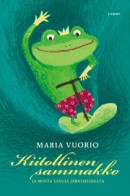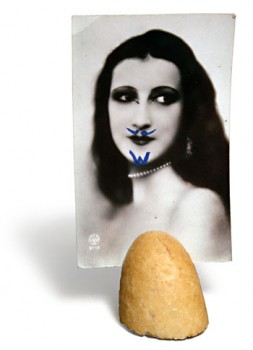Search results for "2010/02/2009/09/2011/04/matti-suurpaa-parnasso-1951–2011-parnasso-1951–2011"
Högtärade Maestro! Högtärade Herr Baron! [Correspondence between Axel Carpelan and Jean Sibelius,1900–1919]
17 December 2010 | Mini reviews, Reviews
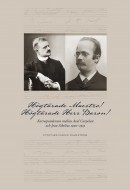 Högtärade Maestro! Högtärade Herr Baron! Korrespondensen mellan Axel Carpelan och Jean Sibelius 1900–1919
Högtärade Maestro! Högtärade Herr Baron! Korrespondensen mellan Axel Carpelan och Jean Sibelius 1900–1919
[My dear Maestro! My dear Herr Baron! Correspondence between Axel Carpelan and Jean Sibelius, 1900–1919]
Red. [Ed. by] Fabian Dahlström
Helsinki: Svenska litteratursällskapet i Finland, 2010. 549 p., ill.
ISBN 978-951-583-200-9
€40, hardback
‘For whom shall I compose now?’ wrote Finnish composer Jean Sibelius in his diary upon hearing of the death of his good friend Axel Carpelan (1858 –1919). Carpelan was a penniless baron, who considered music and his friendship with Sibelius to be the most vital aspects of his life. Using his natural-born talent and instinct, he gained acceptance as Sibelius’ trusted musical confidant, to whom the composer dedicated his second symphony. Axel came to be known by the wider public in 1986, when his great-nephew, the author Bo Carpelan, made him the protagonist of his award-winning novel entitled simply Axel. This volume, edited by Fabian Dahlström, contains the surviving Swedish-language correspondence between Sibelius and Carpelan, as well as letters to Sibelius’ wife, Aino. Carpelan wrote to her when the composer was too busy. These letters contain interesting details such as Aino Sibelius’ account of the origins of her husband’s violin concerto. The comprehensive foreword to this book sheds additional light on Carpelan’s life.
Nordic prize to Sofi Oksanen
31 March 2010 | In the news
The Nordic Council’s Literary Prize 2010 has been awarded to Sofi Oksanen for her novel Puhdistus (‘Purge’, WSOY, 2008).
The winning novel was selected by a jury from a shortlist of 11 works from the Nordic countries. The prize, worth approximately 47,000 euros, will be awarded in Reykjavik in November.
The novel, about women’s fates in the violent history of 20th-century Estonia, was awarded both the Finlandia Prize for Fiction and the Runeberg Prize in Finland, where it has sold more than 142,000 copies.
So far publication rights have been sold to 27 countries; the English translation, by Lola Rogers, will appear next month in the US, published by Grove Press.
My friend Erik Hansen
Short prose from Muita hyviä ominaisuuksia (‘Other good characteristics’, Otava, 2010)
On the first day we played getting-to-know-you games. On the second day we played real Finnish baseball out behind the university. On the third day we travelled to the countryside. Classes started sometime at the end of the second week. We watched the movie One Flew Over the Cuckoo’s Nest. The professor slurped Coke, chain smoked, and rewound the video back and forth: Nurse Ratched’s plump face filled the screen and then in the next image where her face had been there was a basketball Jack Nicholson was squeezing.
It was the autumn of 1992, and I was studying film and communications theory in Copenhagen.
The excursion to the country frightened me, a shy bacteriophobic neurotic. The Danes thought the camping centre’s shared mattresses and group cooking were hygge – cozy. There is no way a dictionary translation could ever cover all the forms of cosiness the Danes achieve together. I fled the camping centre on the first morning. On the train to Copenhagen I recognised all the usual post-escape feelings: shame, fear, guilt, loneliness and overwhelming euphoria. More…
About us
8 January 2009 |
The Books from Finland online journal ceased operation on 1 July 2015, and no new articles will be published on the site.
A comprehensive online archive is available for readers to access. Brief extracts from Books from Finland may be quoted, provided that the source is cited.
If you wish to use longer extracts, please contact .
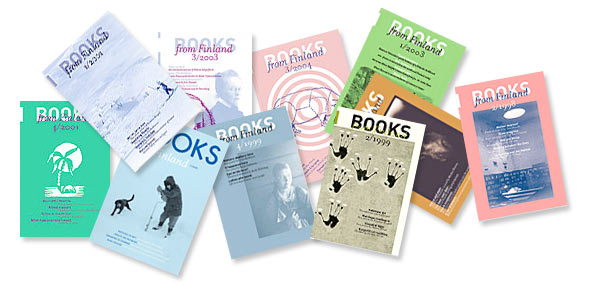
Books from Finland, an independent English-language literary journal, was aimed at readers interested in Finnish literature and culture. Its online archive constitutes a wide-ranging collection of Finnish writing in English: over 550 short pieces and extracts from longer works by Finnish authors were published from 1967 onwards.
Books from Finland featured classics as well as new writing, fiction and non-fiction, and other materials aimed at giving readers additional information on Finnish society and the wellsprings of Finnish literature. The target audience encompasses literary and publishing professionals, editors, journalists, translators, researchers, students, universities, Finns living abroad and everyone else with an interest in Finland and its literature.
Of course, publishing Finnish and Finland-Swedish literature in English requires skilled translators. Books from Finland’s editorial policy was always to use native English-speaking translators. In recent years David Hackston, Hildi Hawkins, Emily & Fleur Jeremiah, David McDuff, Lola Rogers, Neil Smith, Jill Timbers, Ruth Urbom and Owen Witesman translated for us.
Books from Finland was founded in 1967 and appeared in print format up to the end of 2008. From 2009 to 2015 it was an online publication. The journal’s archives have been fully digitised, and remaining issues will be made available in late 2015.
The Finnish Book Publishers’ Association (Suomen Kustannusyhdistys, SKY) began publishing the print edition of Books from Finland in 1967 with grant support from the Finnish Ministry of Education and Culture. In 1974 the Finnish Library Association (Suomen Kirjastoseura) took over as publisher until 1976, when it was succeeded by the Helsinki University Library, which remained as the journal’s publisher for the next 26 years. In 2003 publishing duties were handed over to the Finnish Literature Society (Suomalaisen Kirjallisuuden Seura, SKS) and its FILI division, which remained its home until 2015. The journal received financial assistance from the Finnish Ministry of Education and Culture throughout its 48 years of existence.
The editors-in-chief of Books from Finland were Prof. Kai Laitinen (1976–1989), journalist and critic Erkka Lehtola (1990–1995), author Jyrki Kiiskinen (1996–2000), author and journalist Kristina Carlson (2002–2006), and journalist and critic Soila Lehtonen (2007–2014), who had previously been deputy editor. The journal was designed by artist and graphic designer Erik Bruun from 1976 to 1989 and thereafter by a series of graphic designers: Ilkka Kärkkäinen (1990–1997), Jorma Hinkka (1998–2006) and Timo Numminen (2007–2008).
In 1976 Marja-Leena Rautalin, the director of the Finnish Literature Information Centre (now known as FILI), became deputy editor of Books from Finland. She was succeeded by Anna Kuismin (neé Makkonen), a literary scholar. Soila Lehtonen served as deputy editor from 1983 to 2006. Hildi Hawkins, who had been translating texts for the journal since the early 1980s, held the post of London editor from 1992 until 2015.
The editorial board of Books from Finland was chaired from 1976 to 2002 by chief librarian Esko Häkli, from 2004 to 2005 by the Secretaries-General the Finnish Literature Society, Jussi Nuorteva and Tuomas M.S. Lehtonen, and from 2006 to 2015 by Iris Schwanck, director of FILI. Members of the board included literary scholars, journalists, authors and publishers.
This history of Books from Finland was compiled by Soila Lehtonen, who served as the journal’s deputy editor from 1983 to 2006 and editor-in-chief from 2007 to 2014. English translation by Ruth Urbom.
Eino Leino Prize to Hannele Huovi
17 April 2009 | In the news

Hannele Huovi. - Photo: Laura Vesa
‘Methinks,/ said the sausage dog / who loved eating verse, that / poetry is tastier than bone.’ (From Karvakorvan runopurkki [Furry pooch’s jar of verse])
Hannele Huovi (born 1949) has received the 2009 Eino Leino Prize, worth € 5,200 and funded by the Finnish Book Foundation, for her extensive work as a writer of books for children and young people, of novels, poetry and text books. More…
Jukka Laajarinne: Ruoalla ei saa leikkiä [Don’t play with your food]
5 February 2010 | Mini reviews, Reviews
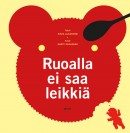 Ruoalla ei saa leikkiä
Ruoalla ei saa leikkiä
[Don’t play with your food]
Kuvitus [Ill. by]: Martti Ruokonen
Helsinki: WSOY, 2009. 60 p.
ISBN 978-951-0-35040-9
18.20 €, hardback
Jukka Laajarinne (born 1970) exercises his obsession with challenging authority again, stretching the boundaries of traditional children’s literature. It seems that becoming a father has made him wonder at the dominant role of food in everyday life: this book deals broadly with food, eating, and food culture. The impetus for the stories might be an ordinary figure of speech or adage that is taken apart and played with. For instance, King Midas, familiar from Greek mythology, who turned everything to gold with his touch, is transformed in Laajarinne’s retelling into a sticky-fingered kid who makes a mess of everything around him. Martti Ruokonen’s graphic illustrations are stark and even coarse in places, their colour choices and rounded forms reminiscent of visual images made for the first books for babies.
Lasse Rantanen & Hannu Tarmio: Lapin sydän [Heart of Lapland]
20 August 2010 | Mini reviews, Reviews
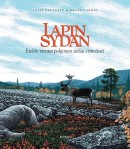 Lapin sydän. Etelän vieraat pohjoisen sielua etsimässä
Lapin sydän. Etelän vieraat pohjoisen sielua etsimässä
[Heart of Lapland. Visitors from the south in search of the Northern soul]
Helsinki: Nemo Publishing Company, 2009. 216 p., ill.
ISBN 978-952-240-015-4
€ 33, hardback
Lapland and its myths have always inspired artists and tourists. In this book two Lapland enthusiasts ponder the things that make Finns from the south return to the north over and over again. Former publisher Hannu Tarmio lost his heart to Lapland 60 years ago; Lasse Rantanen is a graphic designer who is building his own cabin in Savukoski, eastern Lapland. The book is illustrated with his ink-and-abrasive drawings. Tarmio discusses Sámi identity, the history of log floating and gold panning, river pearl mussel fishing, alcohol use, mythology, and tourism and its impact on the environment. The book contains excerpts from literature on Lapland and portraits of its authors (including Yrjö Kokko, Timo Mukka and Nils-Aslak Valkeapää) and presents indigenous Lapps – one of them was Aleksi Hihnavaara, nicknamed Mosku, a legendary but controversial reindeer herder and hunter who fought the Russian Skolt reindeer poachers.
Maria Vuorio: Kiitollinen sammakko [The grateful frog]
5 February 2010 | Mini reviews, Reviews
Kiitollinen sammakko ja muita satuja järviseudulta
[The grateful frog and other stories from the lake country]
Kuvitus [Ill. by]: Virpi Penna
Helsinki: Tammi, 2009. 111 p.
ISBN 978-951-31-5017-4
18.20 €, hardback
There is no need to categorise Maria Vuorio’s original yet tradition-conscious prose and poetry as being for readers of a particular age. A father and son, Aatos and Justus, are spending their vacation at a summer cabin. Justus rescues a frog from a well, setting in motion a chain of events that leads the boy to see the world through different eyes. The frog happens to be the king of the frogs, and wishes to reward Justus for his good deed. The stories are wonderful explorations of humble, reticent animals – a perch, a dragonfly, a spider, a crab, a mole. A bumblebee’s leg in a cast has probably never been described with such devotion before. Today, Finnish children’s relationship with nature is limited to the surroundings of the summer cabin. But Vuorio’s view of the relationship of child with nature is still a romantic one. Dazzled by the moonlight, Justus wonders to himself, ‘Why is there such beauty, if no one ever sees it?’
Out of the body
13 January 2011 | Reviews
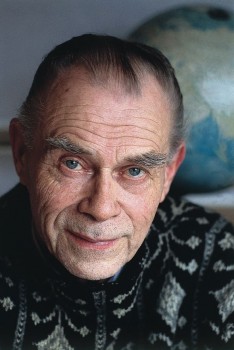
Veikko Huovinen. Photo: Irmeli Jung
‘Where will you be spending your eternity?’ ‘A spot of transmigration’, a short story by Veikko Huovinen (1927–2009), immediately confronts its main character, a man named Leevi Sytky, with this ultimate question.
Behind it is the sense of sin and fear of damnation typical of the religious life of northern Finland. Anyone who has made it as far as this final short story of Huovinen’s 1973 collection, Rasvamaksa (‘Fatty liver’) will, however, not make the mistake of taking the question too seriously; something diverting is clearly once again on offer.
Soon Leevi Sytky takes his leave of life in slightly sinful circumstances, but in the hereafter it turns out that these are not looked upon with disapproval. More…
Paris, je t’aime
7 May 2010 | This 'n' that
‘Paris traverse la pensée comme une encyclopédie de la vie, où l’on découvre des passages, des cours intérieures, des ruelles et des autoroutes, toujours plus surprenants. La ville ne se vide ni n’abandonne jamais, n’accorde ni ne refuse.’
‘Paris permeates your mind like an encyclopaedia of life in which you will incessantly discover astonishing new passages, courtyards, alleys and avenues. It will never either run empty or surrender, it won’t admit or refuse.’
L’air de Paris / Pariisin tuoksu (‘Air of Paris’, Musta Taide, 2009) is an elegant little book that features artwork by Ismo Kajander and texts by Anna Kortelainen relating to the mother city of all artists. More…
Siiri Enoranta: Painajaisten lintukoto [Sweet haven of nightmares]
24 January 2013 | Mini reviews, Reviews
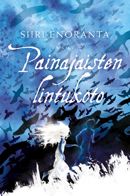 Painajaisten lintukoto
Painajaisten lintukoto
[Sweet haven of nightmares]
Helsinki: WSOY, 2012. 330 pp.
ISBN 978-951-0-38932-4
€26.90, hardback
Siiri Enoranta’s debut novel, Omenmean vallanhaltija (‘The Ruler of Omenmea’, Robustos, 2009) was nominated for the Finlandia Junior award, while another of her novels, Gisellen kuolema (‘The death of Giselle’) was nominated for the Runeberg Prize. Painajaisten lintukoto marks a departure from the genre Enoranta had focused on in her previous works. Her books incorporate the joy of spellbinding, spontaneous fantasy and skill at creating ever more uncanny settings. This novel is situated in the vacillating borderlands between sleep and the waking world. Lunni is a teenage boy who has been set a challenging task of overcoming nightmares and restoring natural sleep to people. The boy is joined by Tui, a mechanical girl. Other important figures in the story are giant tame birds that help Lunni and Tui get from place to place. The prose of Siiri Enoranta (1987) is lyrical, but it also contains points of contact for fans of fantasy writing of many different ages.
Translated by Ruth Urbom
From the land of abundant reindeer…
17 March 2011 | This 'n' that
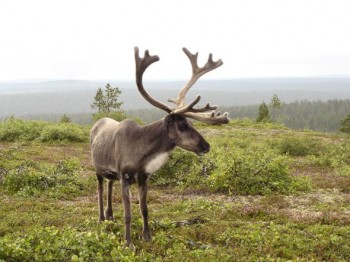
Rangifer tarandus, Finnish Lapland. Photo: Grand-duc (http://en.wikipedia.org/wiki/User:Grand-Duc)
Is Finland, a land of reindeer, ‘dense pine forests and deep snows’ also a ‘quiet literary landscape’?
Not exactly, as we at Books from Finland hope we are demonstrating. And over on the Bookslut website, Bonnie B. Lee comes to the same conclusion, after having mused about the reindeer (yes: in Helsinki you find tasty chunks of them in the freezer boxes of any foodstore) and reading three Finnish novels in English translation.
The novels Lee reviews are Purge by Sofi Oksanen (Puhdistus, 2008, translated by Lola Rogers, published last year), When I forgot by Elina Hirvonen (Että hän muistaisi saman, 2005, translated by Douglas Robinson, published in 2009) and The Year of the Hare by Arto Paasilinna (Jäniksen vuosi, 1975, first published in an English translation by Herbert Lomas in 1995, reprinted as a Penguin edition last year).
We have just entered the Year of the Rabbit, in recognition of which Paasilinna’s book (about a man who rejects his old life and goes roaming the wildernesses with a hare as his only companion) has appeared on the tables of large bookstores in the US. ‘The Year of the Hare is only the most Finnish, and perhaps most antically Zen-ish, of a shelf-load of books that tell us to find and live by our own ideas of contentment,’ said The Wall Street Journal.
The traumatic experiences of war and Finland’s deep forests are the common feature of these novels, Bonnie B. Lee finds. She also opines that ‘melancholy pervades the Finnish psyche’, and that ‘Finland vies with Hungary for highest suicide rate in Europe‘. Oh, but this latter is no longer true: number one on a World Health Organisation suicide rates list is Lithuania, followed by Hungary, Slovenia, Estonia and Latvia – Finland is number six.
Lee is clearly intrigued by her travels in contemporary Finnish literature. ‘The search for identity, a reckoning with a troubled past, and an outsider’s view looking in,’ she comments, ‘are all the stuff of great writing, and Finland is poised to continue to produce poignant and introspective literature that we can appreciate now that English translators have begun the work.’
Poignant and introspective or occasionally funny and fantastical, this is the work we try to offer an early glimpse of, in translation, at Books from Finland. Stay with us!
Kirjailijoiden Kalevala [The writer’s Kalevala]
7 February 2014 | Mini reviews, Reviews
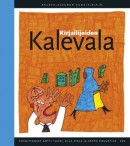 Kirjailijoiden Kalevala
Kirjailijoiden Kalevala
[The writer’s Kalevala]
Toim. [Ed. by]: Antti Tuuri, Ulla Piela ja Seppo Knuuttila
(Kalevalaseuran vuosikirja 92, the Kalevala Society’s yearbook 92)
Helsinki: Suomalaisen Kirjallisuuden Seura, 2013. 313 pp., ill.
ISBN 978-952-222-429-3
€47, hardback
The Kalevala is the Finnish national epic, compiled from oral folk poetry by Elias Lönnrot. It has provided a source of inspiration to Finnish culture since 1839. Kirjailijoiden Kalevala continues a project entitled ‘The artists’ Kalevala’, started in 2009. To start with, four scholars examine, from different viewpoints, the influence of folk poetry and the Kalevala on literature. Some twenty Finnish-language authors then approach the epic with original thoughts and literary means. The result may take the form of reminiscing, of a short story, poem or cartoon. In some texts the Kalevala is present only indirectly, in others some character of the epic is placed in the focus – Väinämöinen, Kullervo, Lemminkäinen or Aino. Kirjailijoiden Kalevala offers a multifaceted collection of viewpoints; aptly, the editors, in their foreword refer to the epic as a literary sampo, the mysterious, mythical object of the Kalevala that generates wealth and riches.
Marita Liulia: Choosing My Religion – Uskontoja jäljittämässä
30 July 2009 | Mini reviews, Reviews
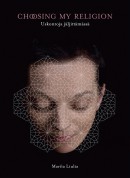 Choosing my Religion – Uskontoja jäljittämässä
Choosing my Religion – Uskontoja jäljittämässä
Käännökset englanniksi [English translations]: Michael Garner
Helsinki: Maahenki, 2009. 223 p., ill.
ISBN 978-952-5652-61-1
€ 38, hardback
Marita Liulia is a visual artist who specialises in interactive media art. Her works have been shown in more than 40 countries. Choosing my Religion discusses the nine major religions of the world. It contains 150 pictures and photographs, as well as texts by the artist and an article by associate professor of comparative religion Terhi Utriainen. The book, like the exhibition at Helsinki’s Kiasma museum which it accompanies, focuses on the religions and on animism. Liulia has travelled in 50 countries, studying religions and discussing them with both scholars and laymen. Her project concentrates on the possibilities of equal choice between religions and emphasises their positive aspects. The subject of the photographs in the book is the artist herself, who abandoned her Christian faith as a teenager. As a child she suffered from rheumatoid arthritis, and was unable to walk until she was 15. Liulia has portrayed herself in the traditional dress and emblems of the different faiths. In her view one of the features uniting all religions is the fact that in them women play the role of servants who pass on the faith to succeeding generations. Choosing my Religion comprises the book, the (touring) exhibition and a website.


